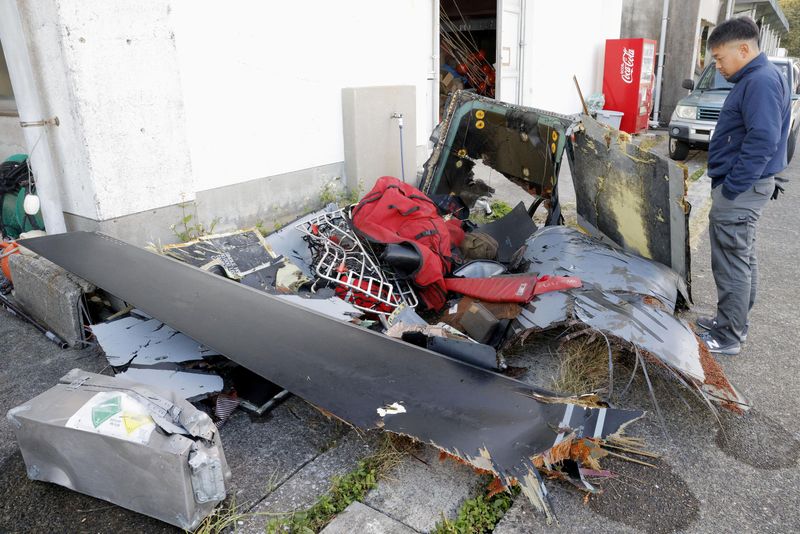Deadly Osprey crash caused by mechanical failure, pilot error, US Air Force says
2024.08.01 23:45
WASHINGTON (Reuters) -A U.S. military Osprey aircraft crash off the coast of Japan in November that killed all eight crew members was caused by a failure in the gear box and the pilot’s decision making contributed to it, an Air Force investigation released on Thursday said.
The U.S. military grounded its fleet of V-22 Osprey aircraft for months after the fatal crash, which happened during a routine training mission on Nov. 29 off Yakushima Island, about 1,040 km (650 miles) southwest of the capital, Tokyo. “The mishap was caused by a catastrophic failure of the left-hand prop rotor gear box… decision-making was causal, prolonging the mishap sequence,” the investigation said. It said that the crew did not have a sense of urgency when they received warnings in the aircraft. The pilot of the Osprey had received an advisory to “Land as Soon as Practical” when the aircraft was still close to mainland Japan and could have diverted to several closer airfields. The investigation added that the pilot continued to fly at 8,000 feet above sea level, even though it would have been prudent to fly below the clouds present.
Although the deployment of the Osprey in Japan has faced opposition in the past, the Japanese government said it accepted the findings of the report and believed further accidents could be prevented.
“We have confirmed at all levels between Japan and the U.S. that ensuring flight safety is the top priority, and we intend to continue to cooperate with them to ensure such safety,” Chief Cabinet Secretary Yoshimasa Hayashi told a regular press briefing on Friday.

At least 400 multipurpose Ospreys have been delivered and are mainly used by the U.S. Air Force, Marines and Navy in Japan and elsewhere, according to Boeing (NYSE:), which manufactures the Osprey along with Textron (NYSE:)’s Bell Helicopter unit. The U.S. Navy aircraft carrier deployed to Japan, the USS Carl Vinson, relies on them to deliver some supplies and personnel.
According to the Flight Safety Foundation, at least 50 personnel have died in crashes operating or testing the aircraft. More than 20 of those deaths came after the V-22 entered service in 2007.








